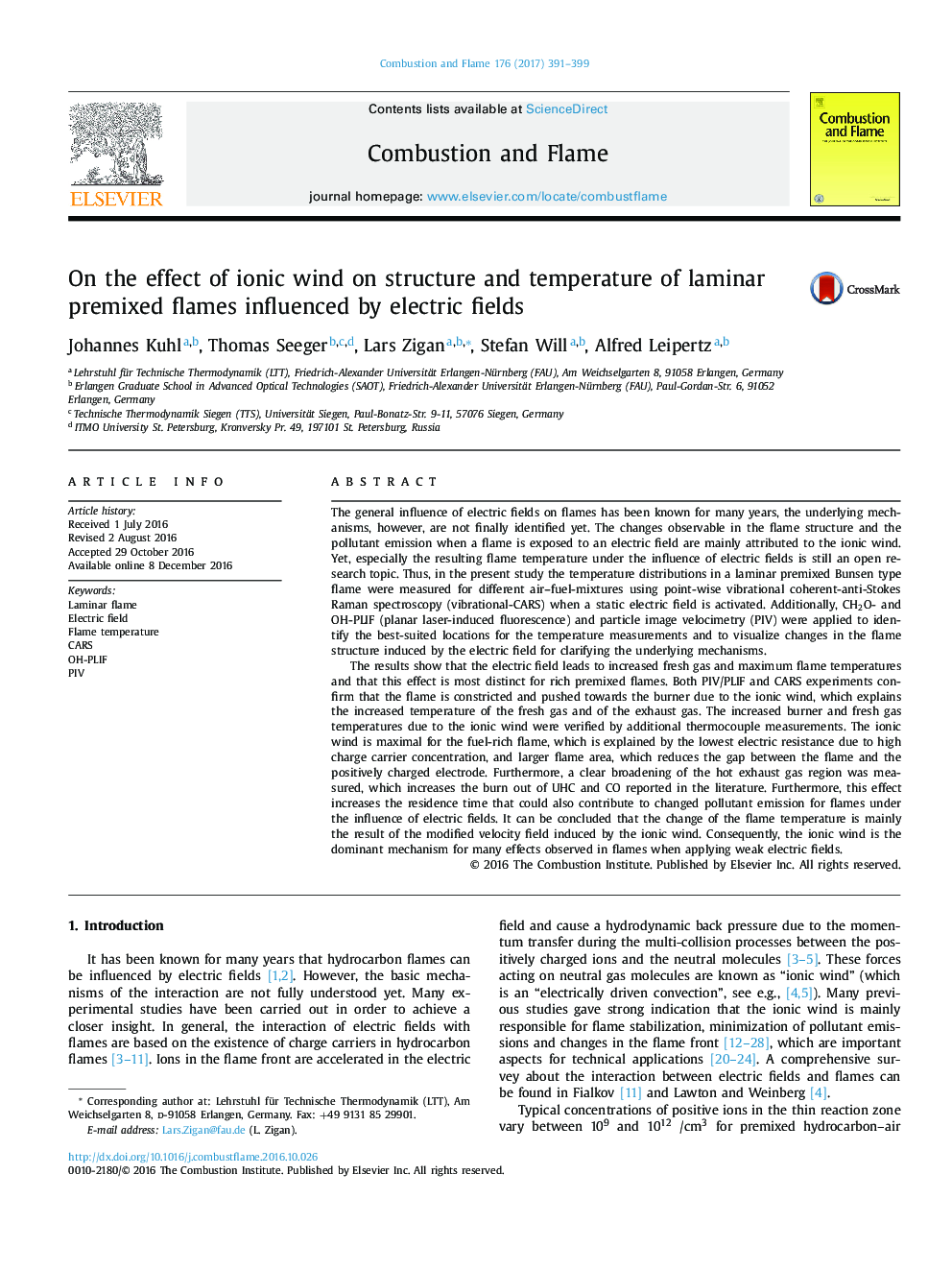| کد مقاله | کد نشریه | سال انتشار | مقاله انگلیسی | نسخه تمام متن |
|---|---|---|---|---|
| 6468481 | 1423561 | 2017 | 9 صفحه PDF | دانلود رایگان |

The general influence of electric fields on flames has been known for many years, the underlying mechanisms, however, are not finally identified yet. The changes observable in the flame structure and the pollutant emission when a flame is exposed to an electric field are mainly attributed to the ionic wind. Yet, especially the resulting flame temperature under the influence of electric fields is still an open research topic. Thus, in the present study the temperature distributions in a laminar premixed Bunsen type flame were measured for different air-fuel-mixtures using point-wise vibrational coherent-anti-Stokes Raman spectroscopy (vibrational-CARS) when a static electric field is activated. Additionally, CH2O- and OH-PLIF (planar laser-induced fluorescence) and particle image velocimetry (PIV) were applied to identify the best-suited locations for the temperature measurements and to visualize changes in the flame structure induced by the electric field for clarifying the underlying mechanisms.The results show that the electric field leads to increased fresh gas and maximum flame temperatures and that this effect is most distinct for rich premixed flames. Both PIV/PLIF and CARS experiments confirm that the flame is constricted and pushed towards the burner due to the ionic wind, which explains the increased temperature of the fresh gas and of the exhaust gas. The increased burner and fresh gas temperatures due to the ionic wind were verified by additional thermocouple measurements. The ionic wind is maximal for the fuel-rich flame, which is explained by the lowest electric resistance due to high charge carrier concentration, and larger flame area, which reduces the gap between the flame and the positively charged electrode. Furthermore, a clear broadening of the hot exhaust gas region was measured, which increases the burn out of UHC and CO reported in the literature. Furthermore, this effect increases the residence time that could also contribute to changed pollutant emission for flames under the influence of electric fields. It can be concluded that the change of the flame temperature is mainly the result of the modified velocity field induced by the ionic wind. Consequently, the ionic wind is the dominant mechanism for many effects observed in flames when applying weak electric fields.
Journal: Combustion and Flame - Volume 176, February 2017, Pages 391-399